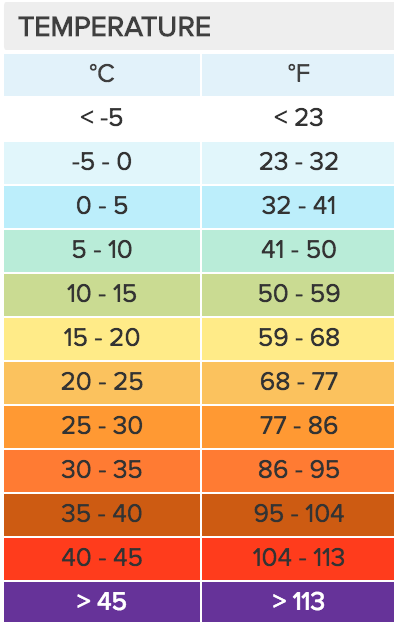Australian Government Bureau of Meteorology, New South Wales
Minor Flood Warning For The Barwon And Darling Rivers
Issued at 03:14 PM EST on Monday 14 April 2025
Flood Warning Number: 12
MINOR FLOODING POSSIBLE AT BOURKE FROM THURSDAY AND BREWARRINA FROM FRIDAY
MINOR FLOODING OCCURRING AT WALGETT
The main flood peak along the Barwon River has now passed Walgett, where river levels peaked on Saturday 12 April and minor flooding continues. This flood peak may cause minor flooding at Brewarrina from around Friday. Further downstream, minor flooding may develop from Thursday at Bourke as inflows from the Culgoa and Bokhara Rivers combine with Barwon River flows.
Upstream, flooding is no longer occurring at Mogil Mogil, and flooding is no longer expected at Mungindi and Collarenebri.
Downstream predictions will be refined once upstream peaks have been observed.
Barwon River downstream of Collarenebri to Walgett:
Minor flooding is occurring along the Barwon River downstream of Collarenebri to Walgett.
The Barwon River at Walgett peaked at 11.74 metres around 05:00 am Saturday, with minor flooding. The river is currently at 11.64 metres and falling slowly, above the minor flood level (10.50 m).
The Barwon River at Walgett is likely to remain above the minor flood level (10.50 m) until early next week.
Barwon River downstream of Walgett to Brewarrina:
Minor flooding may occur along the Barwon River downstream of Walgett to Brewarrina.
The Barwon River at Brewarrina is currently at 4.75 metres and rising, below the minor flood level (6.40 m).
The Barwon River at Brewarrina may reach the minor flood level (6.40 m) around Friday. Higher levels are possible as upstream flows arrive.
Barwon and Darling Rivers downstream of Brewarrina to Bourke:
Minor flooding may occur along the Barwon and Darling Rivers downstream of Brewarrina to Bourke.
The Darling River at Bourke is currently at 7.80 metres and rising, below the minor flood level (9.50 m).
The Darling River at Bourke may reach the minor flood level (9.50 m) around Thursday. Higher levels are possible as upstream flows arrive.
Barwon River Mungindi to Collarenebri:
Cancellation
Flood Safety Advice:
In life threatening emergencies, call 000 (triple zero) immediately. If you require rescue, assistance to evacuate or other emergency help, ring NSW SES on 132 500.
* Avoid drowning. Stay out of rising water, seek refuge in the highest available place.
* Prevent damage to your vehicle. Move it under cover, away from areas likely to flood.
* Avoid being swept away. Stay out of fast-flowing creeks and storm drains.
* Never drive, ride or walk through flood water. Flood water can be deceptive and dangerous.}
For more emergency information, advice, and access to the latest river heights and rainfall observations and forecasts:
* NSW SES: www.ses.nsw.gov.au
* RMS Live Traffic: www.livetraffic.com
* Latest River Heights and Rainfall Observations: www.bom.gov.au/nsw/flood/outerwest.shtml
* Latest NSW Warnings: www.bom.gov.au/nsw/warnings/
* Rainfall Forecasts: www.bom.gov.au/australia/meteye/
* BOM NSW Twitter: www.twitter.com/BOM_NSW
Next issue:
The next warning will be issued by 04:00 pm EST on Wednesday 16 April 2025.
Latest River Heights:
Barwon River at Eagle Farm,5.41,Steady,02:30 PM MON 14/04/25
Barwon River at Mungindi,5.24,Falling,02:30 PM MON 14/04/25
Barwon River at Mogil Mogil,7.08,Falling,02:30 PM MON 14/04/25
Barwon River at Collarenebri,5.14,Falling,02:00 PM MON 14/04/25
Barwon River at Walgett,11.64,Falling,02:30 PM MON 14/04/25
Barwon River at Brewarrina,4.75,Rising,02:30 PM MON 14/04/25
Darling River at Bourke,7.80,Rising,02:30 PM MON 14/04/25
Darling River at Louth,6.25,Rising,01:45 PM MON 14/04/25
Darling River at Tilpa,5.20,Rising,01:15 PM MON 14/04/25
Darling River at Wilcannia,2.23,Rising,02:00 PM MON 14/04/25
Darling River at Nelia Gaari,59.96,Steady,02:00 PM MON 14/04/25
Darling River at Menindee Town,3.79,Steady,02:30 PM MON 14/04/25
Darling River at Menindee Weir 32,1.85,Steady,02:00 PM MON 14/04/25
Channel Outlet at Lake Cawndilla,54.48,Steady,02:30 PM MON 14/04/25
Great Darling Anabranch at Offtake,2.03,Steady,02:00 PM MON 14/04/25
Great Darling Anabranch at Wycot,1.32,Steady,02:00 PM MON 14/04/25
Darling River at Pooncarie,2.31,Steady,02:00 PM MON 14/04/25
Darling Anabranch at U/S Dam,0.65,Steady,02:00 PM MON 14/04/25
Darling Anabranch at D/S Dam,1.76,Steady,02:00 PM MON 14/04/25
Darling River at Burtundy,0.98,Steady,02:00 PM MON 14/04/25
Great Darling Anabranch at Bulpunga,1.15,Steady,02:00 PM MON 14/04/25
Great Darling Anabranch at Tara Downs,0.76,Steady,02:00 PM MON 14/04/25
This advice is also available by dialling 1300 659 210. Warning, rainfall and river information are available at www.bom.gov.au/nsw/flood. The latest weather forecast is available at www.bom.gov.au/nsw/forecasts.
Forecast
Dubbo (32.2452°S, 148.6042°E, 257m AMSL) set as my default location ›
-
My MLA
-
Current condition
TODAY10° 26° mostly sunny Chance of rain: 5% Likely amount: < 1mm First
light

Last light Sunrise Sunset 6:02am EST 6:27am EST 5:44pm EST 6:09pm EST NOW9.3° Feels Like: 5.7° Relative Humidity: 85% Dew: 6.9° Wind: SE 15km/h Gust: 15km/h Rainfall since 9am: 0.0mm Pressure: 1021.7hPa -
Today Weather
DubboNow10.6°cFeels Like:9.8°Wind:N 0km/hGusts:0km/hHumidity:76%10°Min26°MaxToday in DubboMostly sunny. Winds E/SE 15 to 25 km/h tending S/SE in the middle of the day then becoming light in the evening. Overnight temperatures falling to between 9 and 13 with daytime temperatures reaching the mid to high 20s.Tomorrow9°Min27°MaxSunny. The chance of fog on the slopes in the early morning. Light winds becoming S 15 to 20 km/h in the middle of the day then becoming light in the evening. Overnight temperatures falling to between 8 and 11 with daytime temperatures reaching the mid to high 20s. -
Radar
-
Popup Radar
-
Warnings
-
7 day forecast
Today: Mostly sunny. Winds E/SE 15 to 25 km/h tending S/SE in the middle of the day then becoming light in the evening. Overnight temperatures falling to between 9 and 13 with daytime temperatures reaching the mid to high 20s.
Forecast for Dubbo (32.2452°S, 148.6042°E, 257m AMSL) Wed Thu Fri Sat Sun Mon Tue Summary Minimum 10° 9° 11° 11° 13° 11° 8° Maximum 26° 27° 27° 29° 29° 22° 25° Chance of rain 5% 5% 5% 5% 40% 40% 30% Likely amount < 1mm < 1mm < 1mm < 1mm < 1mm 1-5mm < 1mm UV index High High High High High High High Fire Danger Rating Moderate Moderate Moderate Moderate - - - Frost risk Nil Nil Nil Nil Nil Nil Nil 9am 3pm 9am 3pm 9am 3pm 9am 3pm 9am 3pm 9am 3pm 9am 3pm Wind speed 18
(km/h)14
(km/h)10
(km/h)13
(km/h)11
(km/h)9
(km/h)8
(km/h)12
(km/h)13
(km/h)18
(km/h)16
(km/h)19
(km/h)15
(km/h)16
(km/h)Wind direction SE S SSE SSW E SW ENE NW NNE NW SW SW SSE S Relative humidity 63% 33% 62% 29% 68% 34% 56% 30% 48% 29% 56% 35% 66% 38% Dew point 10°C 8°C 10°C 7°C 13°C 9°C 11°C 9°C 10°C 8°C 8°C 5°C 9°C 9°C -
28 Day Rainfall forecast
-
12 Month Rainfall Forecast
Dubbo Rain Forecast
Dubbo 12-month Rainfall ForecastAprMayJunJulAugSepOctNovDecJanFebMar20252026647768676587105012 - 34 - 78 - 910Well below normalBelow normalNear normalAbove normalWell above normalIssue Notes - Issued Mar 28
ENSO status: Weak La Niña-like conditions. IOD status: Neutral. SAM status: Neutral. The El Niño Southern Oscillation (ENSO) is in a weak La Niña-like pattern. The US declared a La Niña event this summer, but this event has not met the BoM definition, and will likely end in the coming weeks. A La Niña typically increases rainfall over northern and eastern Australia, while reducing rainfall over southern coastal Australia and western Tas. The Indian Ocean Dipole (IOD) is in a neutral phase and does not play a part in Australia's climate during this time of year. The Southern Annular Mode (SAM) is in a neutral phase. Forecasts show a tendency towards the positive phase in autumn, with the long-wave pattern indicating that cold fronts are a bit less likely for Australia's longitudes over the next few months. During autumn, a positive SAM increases rainfall over most of eastern Australia, and decreases rainfall for SA, Vic and western Tas. Rainfall outlooks are showing above average rainfall across much of northern Australia in April due to lingering monsoon activity. Above average rainfall is expected for the NSW coast through autumn, with wetter conditions also developing over western WA from late autumn. SA, Vic and Tas are expected to be average to slightly below average, with average conditions elsewhere.
-
Popup - Daily historical
-
Long range rainfall forecast
-
Past 5 Days
Dubbo Past 5 Days
This MonthMinimum Maximum Rainfall Friday
Apr 1113.2 °C 29.6 °C 0.0 mmSaturday
Apr 1213.5 °C 28.2 °C 0.0 mmSunday
Apr 1314.4 °C 28.1 °C 0.0 mmMonday
Apr 1413.1 °C 28.7 °C 0.0 mmTuesday
Apr 1512.1 °C 27.2 °C 0.0 mmLegend -
Almanac
Almanac
Dubbo minimum temp history (32.2452°S, 148.6042°E, 257m AMSL) MAXIMUM TEMPERATURE MINIMUM TEMPERATURE Hottest this month 29.6° 11/04/2025 Coldest this month 4.9° 06/04/2025 Hottest on record 33.9 06/04/2016 Coldest on record -2.2 29/04/2008 Hottest this year 41.5° 28/01/2025 Coldest this year 4.9° 06/04/2025 Long term average 24.8° Long term average 10.4° Average this month 26.8° Average this month 11.2° Hottest April On Record Avg. max. temp. 28.5° 2005 Coldest April on record Avg. min. temp. 6.9° 1999 Dubbo rainfall history (32.2452°S, 148.6042°E, 257m AMSL) RAINFALL Wettest This Month 0.0mm 01/04/2025 Total This Month 0.0mm
0.0 daysLong Term Average 43.3mm 4.9 days Wettest April on record 105.8mm 2000 Driest on record 0.0mm 2019 -
Year to Date
Dubbo Year To Date
Average Rainfall To Apr 213.1mm 25.9 day(s) Total For 2025 173.8mm 18.0 day(s) Total To This Day 2024 384.0mm 32.0 day(s) Wettest Day 36.2mm Mar22 Lowest Temperature 4.9°C Apr 6 Highest Temperature 41.5°C Jan28 -
Popup - Radar
Weather Radar for Australia
Australia Radars
- Adelaide
- Adelaide Airport
- Adelaide Sellicks
- Albany
- Alice Springs
- Bairnsdale
- Bowen
- Brewarrina
- Brisbane
- Brisbane Airport
- Brisbane Marburg
- Broadmeadows
- Broome
- Cairns
- Cairns Airport
- Canberra
- Carnarvon
- Ceduna
- Coffs Harbour
- Dampier
- Darwin
- Darwin Airport
- Emerald
- Esperance
- Eucla
- Geraldton
- Giles
- Gladstone
-
Popup - Monthly historical
-
Climatology
Climate History
Dubbo Climatology
Dubbo Long-Term Averages
Long-Term Averages Jan Feb Mar Apr May Jun Jul Aug Sep Oct Nov Dec Ann Mean Max (°C) 33.6 32.1 29.2 24.8 20.0 16.3 15.7 17.7 21.5 25.2 28.7 31.6 24.6 Mean Min (°C) 18.4 17.6 14.9 10.4 6.5 4.3 3.1 3.3 6.0 9.5 13.5 15.9 10.2 Mean Rain (mm) 55.7 49.3 64.8 43.3 36.6 50.4 45.0 41.5 44.4 50.5 61.5 62.0 605.9 Mean Rain Days 7.3 6.8 6.9 4.9 6.7 11.0 11.5 8.0 7.0 7.2 7.7 6.9 91.9



